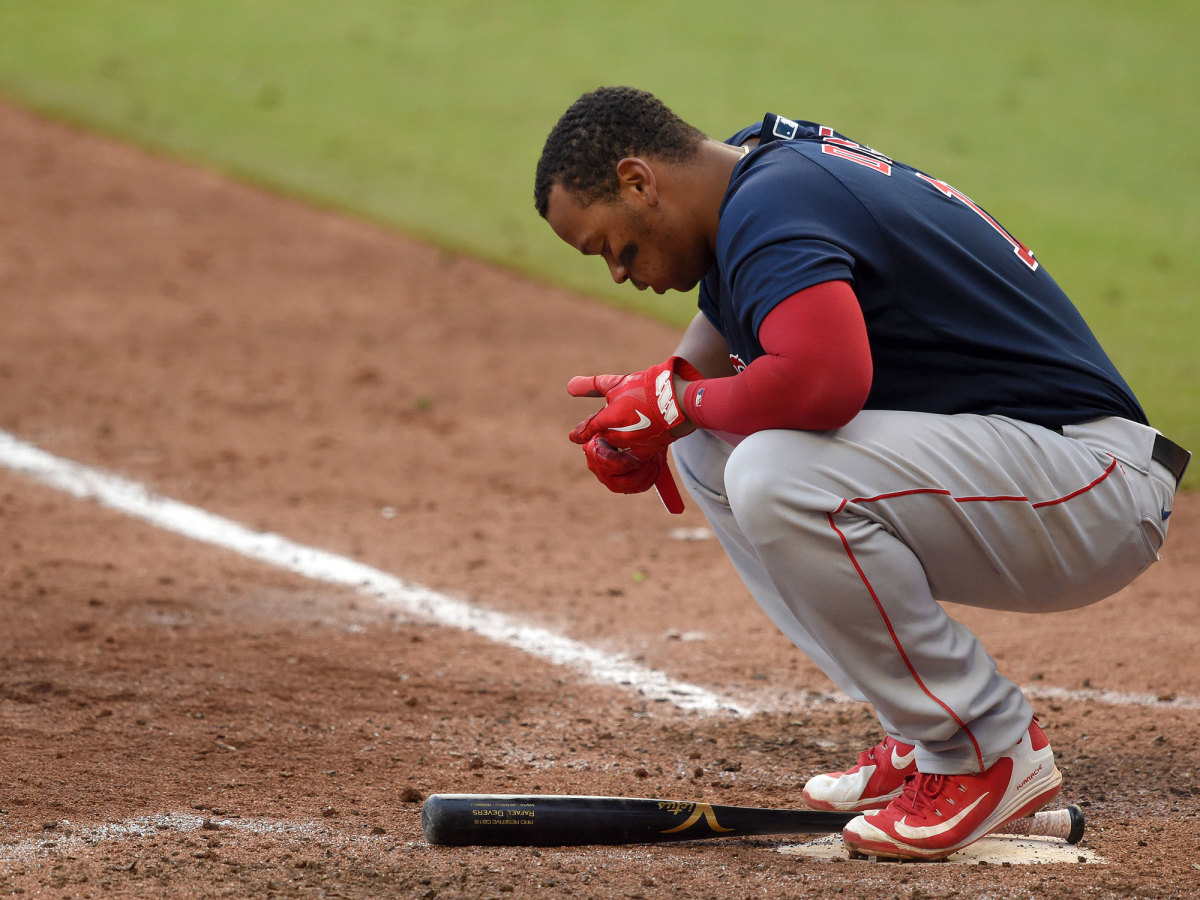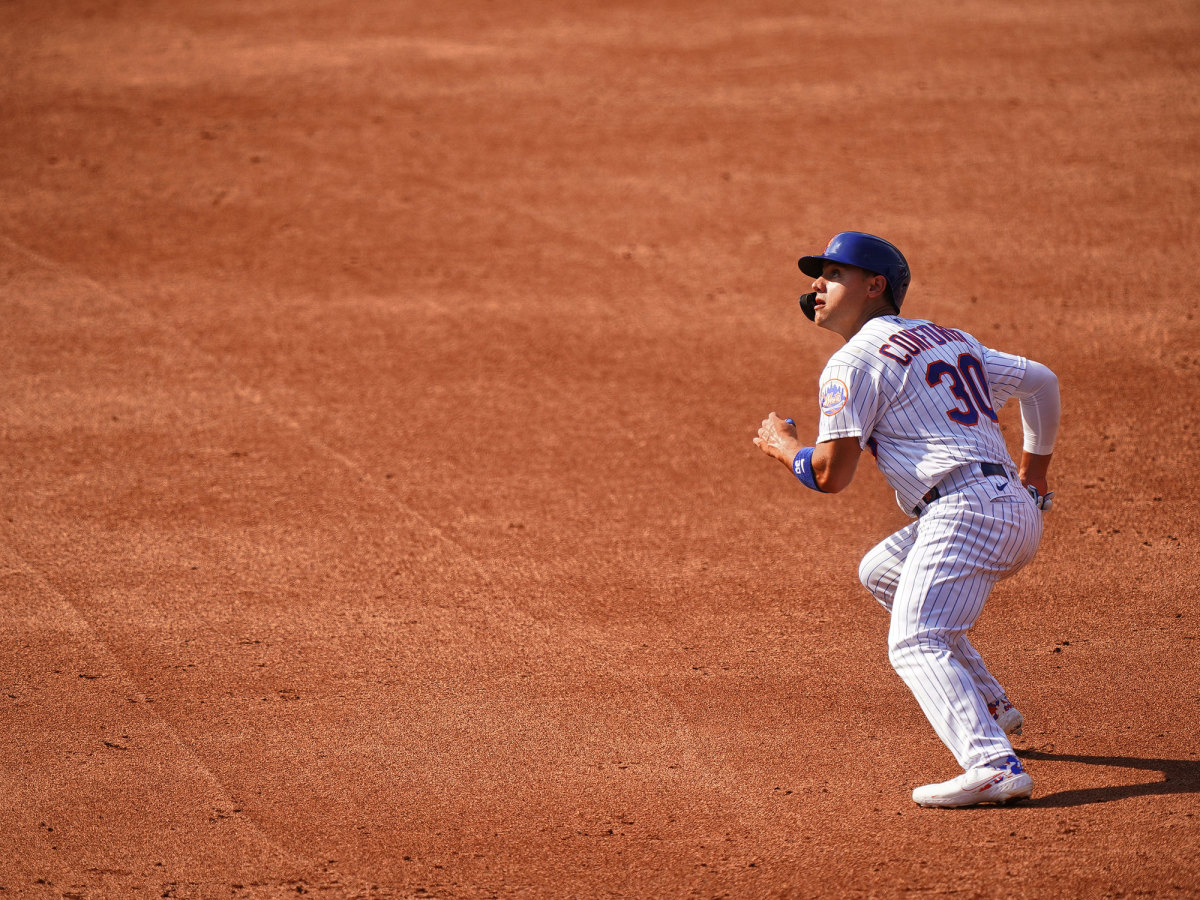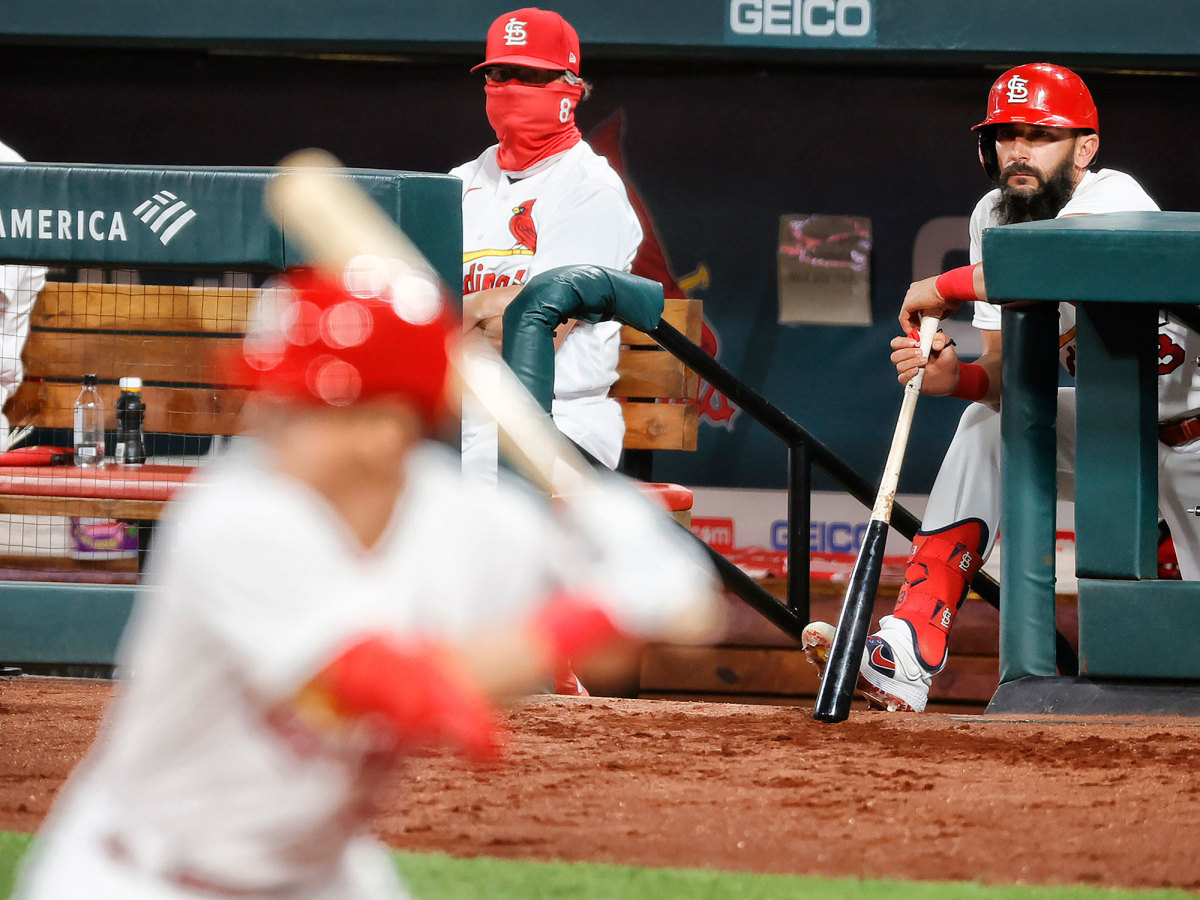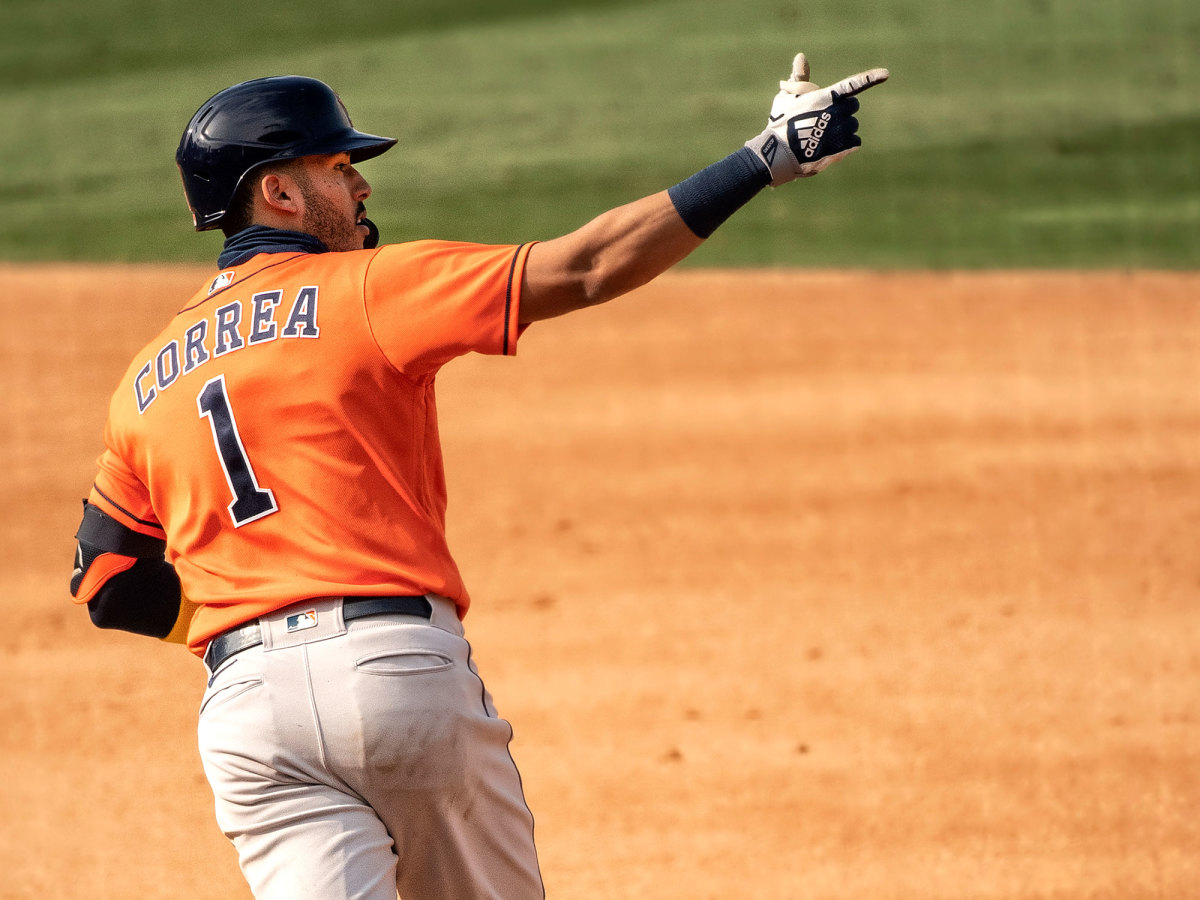MLB Power Rankings: Can Anyone Stop the Dodgers in 2021?
By now, you know that the Dodgers won the 2020 World Series title. But did you know the championship also clinched the even more impressive accomplishment of going wire-to-wire on the Sports Illustrated Power Rankings in 2020? That’s right; we pegged them as the World Series favorites in our initial preseason ranking—daring, we know—and they never once descended from that perch during our weekly check-ins.
MLB free agency officially started on Sunday night to close the book on the 2020 season. Let's put a bow on it with our season-ending power rankings, looking back on what unfolded and sneaking a peek at what's to come in '21.
30. Pittsburgh Pirates (Last Rank: 30)
The Pirates finished with MLB’s worst record (19–41) and worst offense (3.65 runs per game). What else is there to know? They're heading for another last-place finish next season.
29. Texas Rangers (Last Rank: 28)
The Rangers scored an AL-worst 224 runs in their first season at Globe Life Field. It may be time for a full-scale rebuild, and not even Joey Gallo should be safe—though his struggles in 2020 mean his value has bottomed out. Other players once viewed as potential core building blocks—Rougned Odor, Willie Calhoun and Danny Santana—were disappointments as well. Tough decisions ahead for Texas.

28. Boston Red Sox (Last Rank: 29)
This season was an outright disaster for the Red Sox. They have issues in abundance, but particularly on the pitching side. Boston allowed the most runs in the American League, and the team’s starters pitched the second-fewest innings (246) and had the lowest combined WAR (0.4) in baseball. But hey, maybe ex-manager Alex Cora will come back.
27. Detroit Tigers (Last Rank: 23)
The Tigers hung around the periphery of the playoff race for about six weeks before falling off. That they remained in the hunt for so long is an accomplishment considering their abysmal starting rotation, which had the worst ERA (6.37) of any team in the majors. Former top prospects Casey Mize and Tarik Skubal struggled in their first taste of big league hitting, and their development will be paramount in Detroit’s process of building a contender in the near future.
26. Colorado Rockies (Last Rank: 21)
The Rockies had a 74.7% chance of qualifying for the playoffs as of Aug. 8 after jumping out to an 11–3 record. They proceeded to go 15–31 the rest of the way. Nolan Arenado fell well below his standards at the plate (84 OPS+) and is no longer a sure bet to opt out of his contract after next season and leave $164 million on the table. The Rockies may see what they can get for him and definite 2021 free agent Trevor Story on the trade market.
25. Arizona Diamondbacks (Last Rank: 26)
Three-fifths of Arizona’s rotation—Madison Bumgarner, Robbie Ray and Luke Weaver—all posted ERAs above 6.48 in a combined 28 starts. The offense also featured its fair share of disappointments in Eduardo Escobar, whose 56 wRC+ ranked last among the 124 players with at least 200 plate appearances, and Ketel Marte, whose power disappeared after his All-Star campaign in 2019.
24. Los Angeles Angels (Last Rank: 27)
Once again, the Angels were left out of the postseason field, and once again the blame lies with their starting pitching. Despite a breakout year from Dylan Bundy and solid seasons by Andrew Heaney and Griffin Canning, Angels starters had the second-worst ERA (5.52) in baseball. The offense produced well enough, though, scoring the fourth-most runs in the AL. With stars like Mike Trout and Anthony Rendon still in their primes, there’s every reason to believe the club will take a win-now approach this offseason. How the front office goes about plugging the roster holes will dictate whether the Angels can sneak into the playoff picture in 2021.
23. Kansas City Royals (Last Rank: 25)
The Royals are firmly in rebuilding mode, and they finished tied with Cleveland for the second-fewest runs scored in the AL. Two bright spots for the next contender in Kansas City are rotation cornerstones Brad Keller and Brady Singer, who combined for 118 innings and 2.8 bWAR in 21 starts. Their development will provide a strong foundation going forward.
22. Seattle Mariners (Last Rank: 22)
A strong finish to the season put the Mariners on the edges of the playoff hunt down the stretch, though this remains a team with plenty of holes. The bullpen combined for -1.4 fWAR—the worst in the majors. If the front office feels the team is within striking distance of contention in 2021, the free agent market has several high-leverage relief pitchers available for Seattle to try to pounce on.
21. Baltimore Orioles (Last Rank: 20)
Baltimore’s .417 winning percentage represents tremendous progress for a club that had lost a combined 223 games the previous two seasons. Orioles pitchers had the highest ERA (5.67) and lowest combined fWAR (5.5) in 2019, yet the group was firmly in the middle of the pack in 2020. Baltimore is unlikely to push its chips to the middle this offseason in pursuit of building a contender in the short-term. But intriguing pieces like Keegan Akin and Dean Kramer—as well as 2019’s breakout pitcher John Means—provide optimism for better days to come in Birdland.

20. New York Mets (Last Rank: 19)
One-year signings of Rick Porcello (5.64 ERA) and Michael Wacha (6.62 ERA) proved to be disastrous for the Mets, as was Steven Matz’s abrupt descent into allowing more than a run per inning. As such, the rotation needs help, and decisions will soon need to be made on 2021 free agents Noah Syndergaard and Michael Conforto. There are also no viable options at catcher on the roster, but new owner Steve Cohen may have something to say about all that.
19. Washington Nationals (Last Rank: 24)
There may have been no bigger drop-off in production at a position from year to year than Washington’s third base spot. The Nationals replaced Anthony Rendon with a group led by Carter Kieboom, and the 22-year-old top prospect didn't look ready for the big leagues. Virtually every hitter aside from Juan Soto, Trea Turner and Yan Gomes didn’t pull his weight. The same could be said for every starter not named Max Scherzer, and even the three-time Cy Young winner showed signs of decline. It was a rough World Series hangover.
18. Philadelphia Phillies (Last Rank: 17)
The seven Phillies with the most plate appearances all registered OPS+ above 100, meaning they were above average. The Zack Wheeler (2.92 ERA) signing could not have gone better, while Aaron Nola (3.28 ERA, 12.1 K/9) and Zach Eflin (3.97 ERA, 10.7 K/9) pitched as well as can be expected going forward. But Philadelphia’s bullpen (7.06 ERA) was historically bad, maybe the worst ever, despite undergoing an overhaul at the trade deadline. It’s the most obvious area in need of improvement for any aspiring playoff contender, especially one that hasn't reached October since 2011.
17. Milwaukee Brewers (Last Rank: 18)
Milwaukee technically qualified for the postseason, but that accomplishment lost its luster after being eliminated in a blink by the Dodgers. The Brewers have their work cut out for them; the 2020 edition of this club barely resembled the 2018 squad that pushed the Dodgers to a seven-game NLCS. The offense needs to be reshaped again after last offseason’s makeover didn’t pan out.
16. San Francisco Giants (Last Rank: 12)
The Giants ended their season on a sour note by losing their last three games against the Padres, which put them on the wrong side of a tiebreaker with Milwaukee for the NL’s No. 8 seed. Unfortunately, the Giants’ lineup may have reached its collective ceiling this year; there are precious few young players on the roster, with most of the team’s breakout stars from 2020 already on the wrong side of 30. Donovan Solano and Brandon Belt are almost 33, for example, while Mike Yastrzemski and Alex Dickerson will turn 31 next season. Farhan Zaidi could likely mold this roster into a playoff team rather quickly, but it’ll take longer to conjure up the #EvenYearMagic Giants fans witnessed the beginning of 10 years ago. Next season is 2021, after all.
15. Toronto Blue Jays (Last Rank: 10)
The young Blue Jays made it to the postseason but suffered a quick exit. That they were able to end their three-year playoff drought represents the rebuild process being slightly ahead of schedule. Adding depth to a wafer-thin rotation should be the team’s top priority this offseason. Last winter’s signing of Hyun-Jin Ryu was a great success, so finding another arm or two to provide reinforcements will go a long way in Toronto’s ability to compete with the Rays and Yankees in 2021.
14. Cincinnati Reds (Last Rank: 15)
The Reds’ record-breaking 22 straight scoreless innings in the postseason will leave a bad taste in their mouths until they can snap that dubious streak. But it certainly qualified as progress to secure Cincinnati’s first winning record and playoff berth since 2013. They’ll be hard-pressed to repeat that success without the services of Trevor Bauer, though the bigger issue may be if the team’s expensive bats continually fail to live up to their price tags. Jesse Winker was the only regular to record an OPS above .800 despite playing in the hitter-friendly Great American Ball Park.
13. Miami Marlins (Last Rank: 14)
We may be underrating the Marlins, who swept the Cubs in the wild-card series to prove their regular season emergence was no fluke. The future is likely even brighter, as Miami boasts a legitimately impressive stable of young starters. Sandy Alcantara, Elieser Hernandez, Pablo Lopez, Sixto Sanchez and Daniel Castano all started at least six games and registered ERAs between 3.00 and 3.61. There are some obvious places to upgrade the lineup, but that’s about as good of a starting point as you can have.

12. St. Louis Cardinals (Last Rank: 13)
Since the Cardinals played a whopping 21 games that lasted less than nine innings due to their doubleheader-heavy schedule, their offense wasn’t quite as bad as their 28th rank in runs scored indicates. But it was still no surprise to see them get shut out by San Diego in a bullpen game to crash out of the wild-card round. Paul Goldschmidt, Brad Miller and Harrison Bader were the only regulars to compile an OPS+ above 92. That won't cut it over 162 games.
11. Chicago Cubs (Last Rank: 7)
Kyle Hendricks and Yu Darvish acted as a formidable one-two punch atop the rotation, while Ian Happ and Jason Heyward performed well at the plate. But that just about covered the good news for the Cubs. It's jarring to see how far Chicago’s core has fallen since 2016. Javier Báez bested only Jonathan Villar and Evan White in OPS among the 124 players with at least 200 plate appearances. He joined Anthony Rizzo, Kyle Schwarber and David Bote in posting the worst OPS+ of their careers.
10. Cleveland Indians (Last Rank: 11)
Led by the prohibitive Cy Young Award favorite Shane Bieber, no team allowed fewer runs than Cleveland in 2020. The Indians were undone by a scuffling offense that went through too many dry spells. Plugging up lineup holes—of which there were plenty—will be paramount for Cleveland to rock in 2021. Catcher should be among the first needs addressed, as Indians backstops hit a combined .138/.252/.199 with a 32.2% strikeout rate.
9. Chicago White Sox (Last Rank: 2)
The most ascendant team in the AL was a quick exit in the postseason, getting bounced in the wild-card round in three games. The subsequent firing of manager Rick Renteria and surprising hiring of Tony La Russa makes the White Sox an incredibly intriguing club to monitor heading into next season. Still, an exciting core remains and the club should contend next season no matter who the skipper is.
8. Minnesota Twins (Last Rank: 6)
Another year, another early postseason exit for the Twins. Their streak of consecutive playoff losses is now 18. A reason to smile? Nelson Cruz remains ageless and it makes plenty of sense for him to return as a free agent this winter.
7. Oakland Athletics (Last Rank: 5)
Losing in the Division Series to an Astros team with a losing record surely leaves a sour taste, but Oakland still possesses plenty of depth and talent to make another run in 2021. Its biggest strength this season was the bullpen, which could take a big hit with Liam Hendriks, Joakim Soria and Yusmeiro Petit all hitting free agency. The A’s front office has always thrived at filling in the margins, and this winter will provide yet another challenge. (Except they might have to do it without longtime exec Billy Beane.)
6. New York Yankees (Last Rank: 8)
For the Yankees this winter, it will be all about retaining who and what they can. Re-signing infielder DJ LeMahieu will be priority No. 1 for New Yotk's front office, while other standouts like Masahiro Tanaka, James Paxton, Brett Gardner and J.A. Happ also hit the open market.

5. Houston Astros (Last Rank: 16)
After scuffling all season, Houston snuck into the playoffs and reminded the baseball world just how talented a team it really was. Whether or not the team brings back free agent outfielders George Springer and Michael Brantley will go a long way in determining how the Astros are viewed heading into 2021. Among the most encouraging developments for Houston were breakout seasons from a pair of electric young arms in Cristian Javier and Framber Valdez.
4. San Diego Padres (Last Rank: 3)
The Padres were robbed of a chance to see how they could match up with their big-brother rivals at full strength in the NLDS when Cy Young contender Dinelson Lamet and trade deadline prize Mike Clevinger both suffered arm injuries near the end of the regular season. But winning a playoff series and establishing a clubhouse culture that other players want to join was a major step in the right direction for the longtime suffering franchise. It’s safe to say heads won’t roll this offseason.
3. Tampa Bay Rays (Last Rank: 4)
The Rays couldn’t quite match the Dodgers’ layers of talent in the World Series, but it was certainly a banner year for the franchise. There’s little reason to expect much to be different in 2021—Tampa Bay wasn’t heavily involved in the free-agent market last winter, and there aren’t many key players coming off the books this offseason (with the exception of Charlie Morton, who had his $15 million team option for 2021 declined). The Rays should look very similar next season, both in terms of the names and faces on the roster to the results that happen on the field.
2. Atlanta Braves (Last Rank: 9)
The Braves gave the Dodgers all they could handle in the NLCS, going up three games to one before collapsing. Atlanta is set up well to contend as its young arms continue to mature, though retaining Marcell Ozuna and adding a veteran pitcher or two would enhance its chances to topple L.A.
1. Los Angeles Dodgers (Last Rank: 1)
With their 32-year championship drought in the rearview, the real question is whether they can do it all over again in 2021. It's been shouted about for years that no team has repeated as champs since the Yankees in 1999–2000. The Dodgers are as well positioned as any champion since those great Yankees team to take home titles in consecutive years.
